Arevik Tserunyan: Where the sun and clouds converge, art lives
September 26, 2018
They say that the minds of the most creative people live up in the clouds. Artist Arevik Tserunyan has taken that to heart—and then some. Her exhibition, aptly titled “Clouds,” which premieres next month at the Armenian Museum of America, will tackle the weighty topic of the Armenian Genocide with a much-welcomed breath of fresh air—and the clouds and spirits that reside in it.
I met Arevik during one of my travels to the Armenian Museum of America (henceforth, AMA) in Watertown, Mass. to check out an exhibit that, she informed me, had long concluded. But before I could feel disappointed, she complimented my bag—a hand-stitched, carpet-patterned purse from Yerevan's Vernissage market. We talked about h-pem, her art, her journey to the U.S. from Armenia, our mutual fascination with languages (she has a degree in Linguistics, by the way), and her love for the local Armenian community. After about 20 minutes, I realized that I had completely forgotten why I was there in the first place. We agreed to continue the conversation soon, in a formal sit-down interview.
The next time we met, we head upstairs to her studio space, which is sprawling with pieces from “Clouds” (or “Amper” in Armenian), her exhibition on the Armenian Genocide, which will premiere across the hall next month. Something about this space seemed sacred—like I had stepped into a place of worship, not a little art studio.
As we maneuvered to the table to set up, I made sure to not disturb the work that Arevik has been carefully crafting: black and white stencils of early 20th century Armenian men and women, anatomical skulls, and animal faces and body parts scattered the floor; some were glued together, then attached to large cotton balls, which will soon hover over the halls of the AMA, the oldest (and largest) Armenian museum in the United States.
At first glance, it all seemed so random—almost disturbing—but the longer you looked, the more surreal the images became. Maybe that’s the point. Arevik is their creator, but she rather prefers to see herself as the conduit between their world and ours. One cannot help but notice the allegory of it all: her name (meaning “Little Sun” in Armenian) suspending reality for a melding of the past and the present, in a way that only artists know how to do.
AMA, the hosting ground for this exhibition, may be nearly half a century old, but Arevik is its first-ever Artist-in-Residence, a three-year symbiotic program that provides one budding artist with the tools and studio space to advance his/her art, while teaching art courses for the community—and, as she reassures me on more than one occasion, she does not intend to be its last.
For the next hour, we discussed her artistic style, her classes that have been a hit with young Armenians, what she envisions beyond her tenure at the museum, and of course, “Clouds,” but mostly, the conversation flowed like wine, its texture deepening and effects intoxicating the longer we stayed in that magical space, where time and death seemed impermanent.
All images are courtesy of Arevik Tserunyan, unless otherwise noted.
I’ve got the world on a string (of cloud)
Lilly Torosyan: How would you describe your art?
Arevik Tserunyan: Art goes through several stages and I'm still in the beginner's phase. I graduated from my master's program, here in Boston, just three years ago, so I can be called a "fresh-baked" artist. Media-wise, though, my focus has been mostly installation art, with elements of collage performance video. Content-wise, my art is, overall, on the surrealistic, symbolic side.
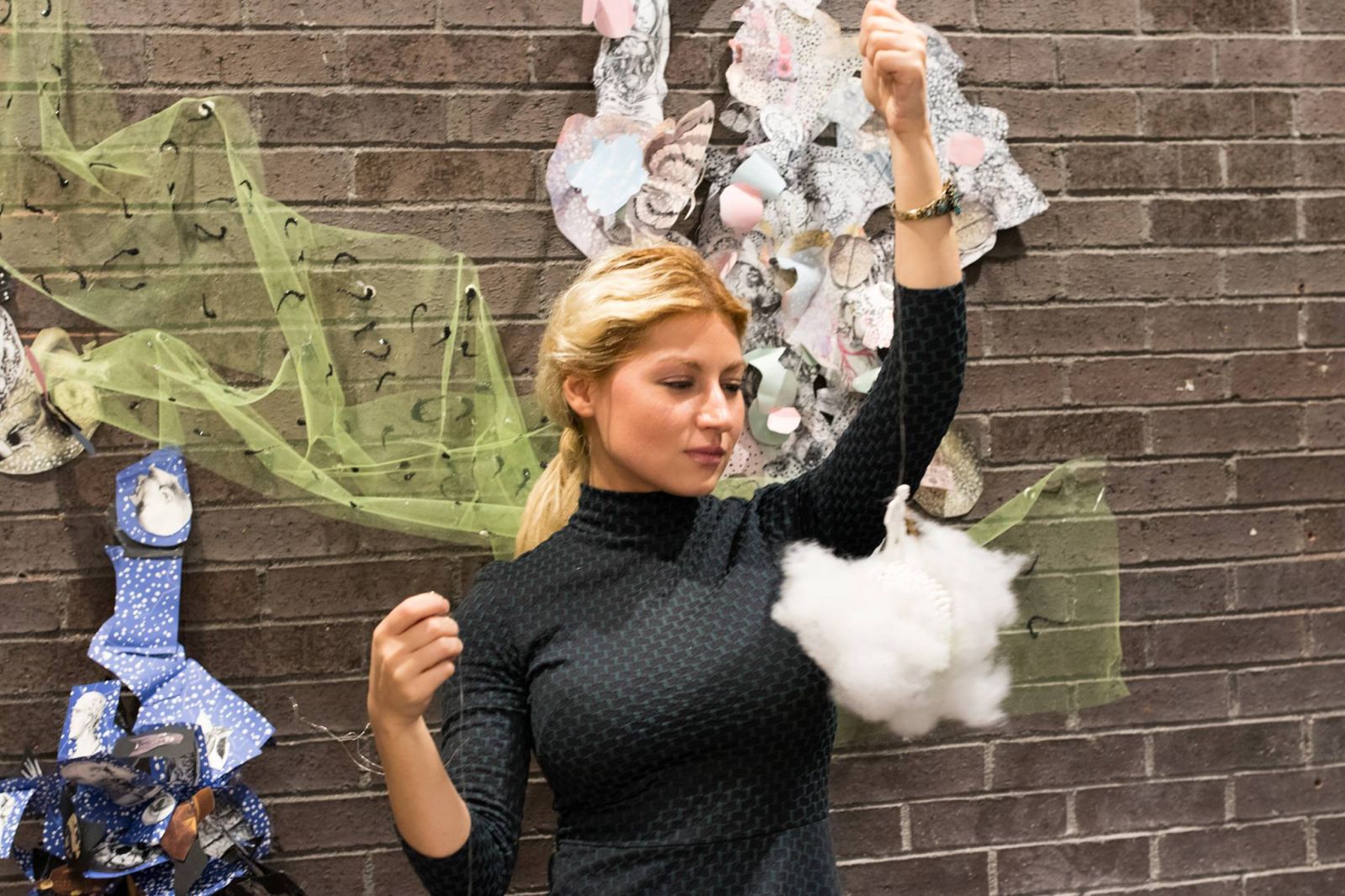 The artist with one of her creations, which will feature in her “Clouds” exhibition at the AMA.
The artist with one of her creations, which will feature in her “Clouds” exhibition at the AMA.
My first major project in Boston, called “The Lost Empire,” was about our Armenian heritage; it was a fantasy story that I wrote based on our current and past history, and everything was viewed from an allegorical prism. It contained huge sculptures made by different materials that were all coordinated with the content—nothing was random. We also had a performance combined with the installation, which was shown in the AMA in 2016.
Like many artists of the 21st century, I am also doing a symbiosis of several media. I like to see how this ensemble of genres coexists together.
L.T.: Tell us about "Clouds" and where the inspiration arose to do an exhibition on the Armenian Genocide. How have you approached this dark chapter of our history?
A.T.: Like “The Lost Empire,” my current project, “Clouds,” is also about Armenians. They all have an allegorical veil, meaning that nothing is direct; my works hint at certain historical facts or analyses, but they are not my political manifestos.
To be honest, the topic of the genocide is very overwhelming and complicated and I originally didn't want to deal with it. I'd been postponing it for a while. I'm an Armenian artist and this is a major topic for our community; we cannot really circumvent it.
Yet, every time I would see something—like a movie or a lecture—some things would really touch me, but most of the time, it was like, 'oh, again?' So, when I decided to do this project, my first reaction was, 'oh, Arevik, no.'
- Arevik Tserunyan
I told my cousin, "I'm going to start a project dedicated to the Armenian Genocide,” and immediately he was like, "no, do something else, Arevik!" But I was sure that this was going to be something different. I really believed that this will have a universal value. Of course, I want our community—other Armenians—to be involved and to appreciate it, but that’s not the goal. The goal is to unite others while bringing attention to the genocide through art, which is a very humanizing factor.
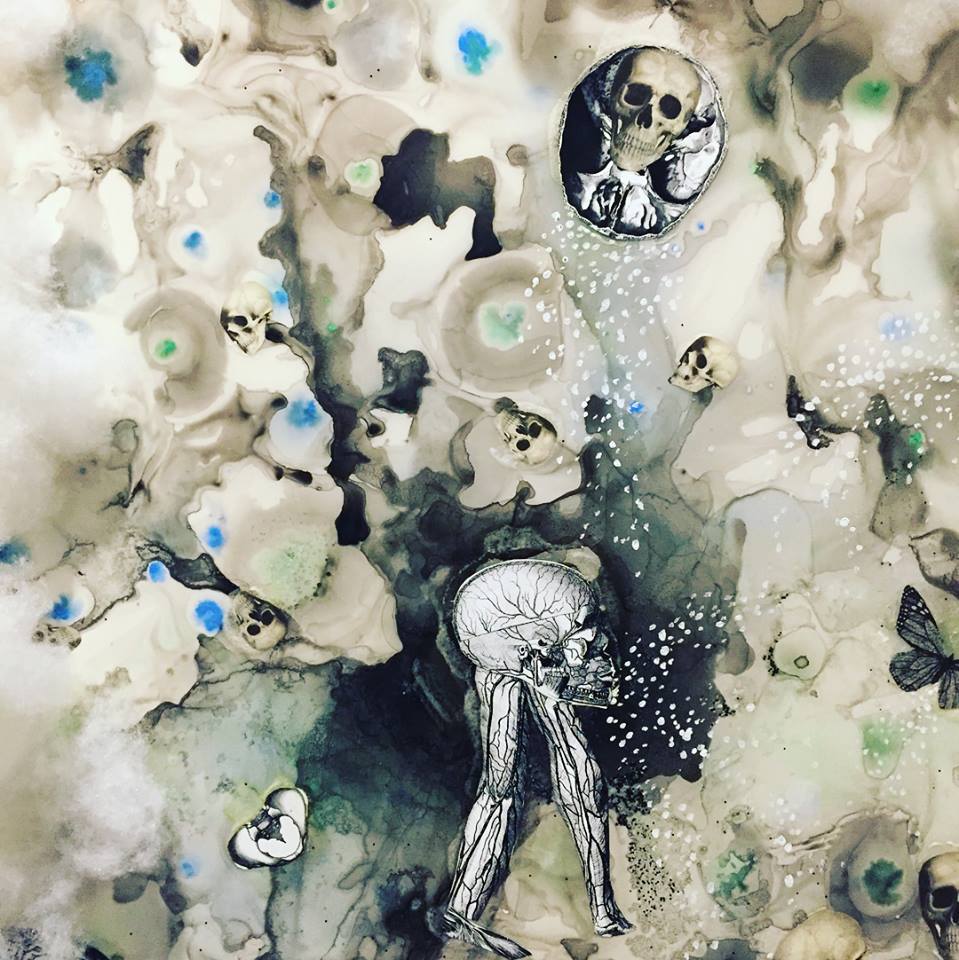 Take a gander at artist Arevik Tserunyan’s magical world of “Clouds.”
Take a gander at artist Arevik Tserunyan’s magical world of “Clouds.”
L.T.: And choosing the Armenian Genocide felt like the most authentic way to do this?
A.T.: Of course, being Armenian, I relate to the genocide in a way that is more personal than with other similar tragedies, so that is why I chose it. “Clouds” is an allegorical interpretation of the genocide. It is my poetic—not factual—way of conveying that people died and turned into clouds; they are in this underworld that I have created. But really, I hoped to speak to this notion of devaluing life. Human beings are all made of the same material, but it is not an obstacle for us to destroy one another. I mainly wanted to convey this message to the viewer.
I used a lot of anatomy imagery to show the insides of us, like what are we made of, because on the inside, there is no difference. You cannot differentiate between different organs. I don't want to go deep into that anatomy, but I want to symbolize the fact that we are all the same inside. That's my main idea in "Clouds."
And also, it is very ephemeral. We can see and feel the clouds, but we cannot touch them. It is the same story with the genocide. It is there, we know about it, we know the facts, but at the same time, we cannot grasp it, we cannot touch those facts. So, there is some correlation between clouds and genocide, for me.
Mediawise, "Clouds" has different elements to it, like 2D (on the wall), 3D (standing pieces on the ground and hanging pieces) and currently, we are working on the video, which is going to be projected on the wall during the installation show. All four walls of the exhibition are going to be covered with collage and sculptural pieces.
Inspiration is a very important factor in creating anything for an artist and, for me, it is very broad because I am changing my sources of inspiration every week to keep me going. For this project, working in the AMA, I really indulged myself in the archival materials of the survivors who came to America and continued our existence, which I never felt that strongly in Armenia, but here, I feel how important it is. I wanted to take a bow in front of those people because immigrating somewhere is a very complex struggle—let alone, from the genocide.
My inspiration was those stories, those photos and materials of our collection, the artifacts that people were donating to the museum from their parents and grandparents, and that they were also telling their stories. All of those things made me think about this topic in a different way than I did when I was in Armenia. I feel like I am already a part of this beautiful diaspora and it makes my connection to these people stronger. That was the main conceptual—or rather, spiritual—inspiration—for me.
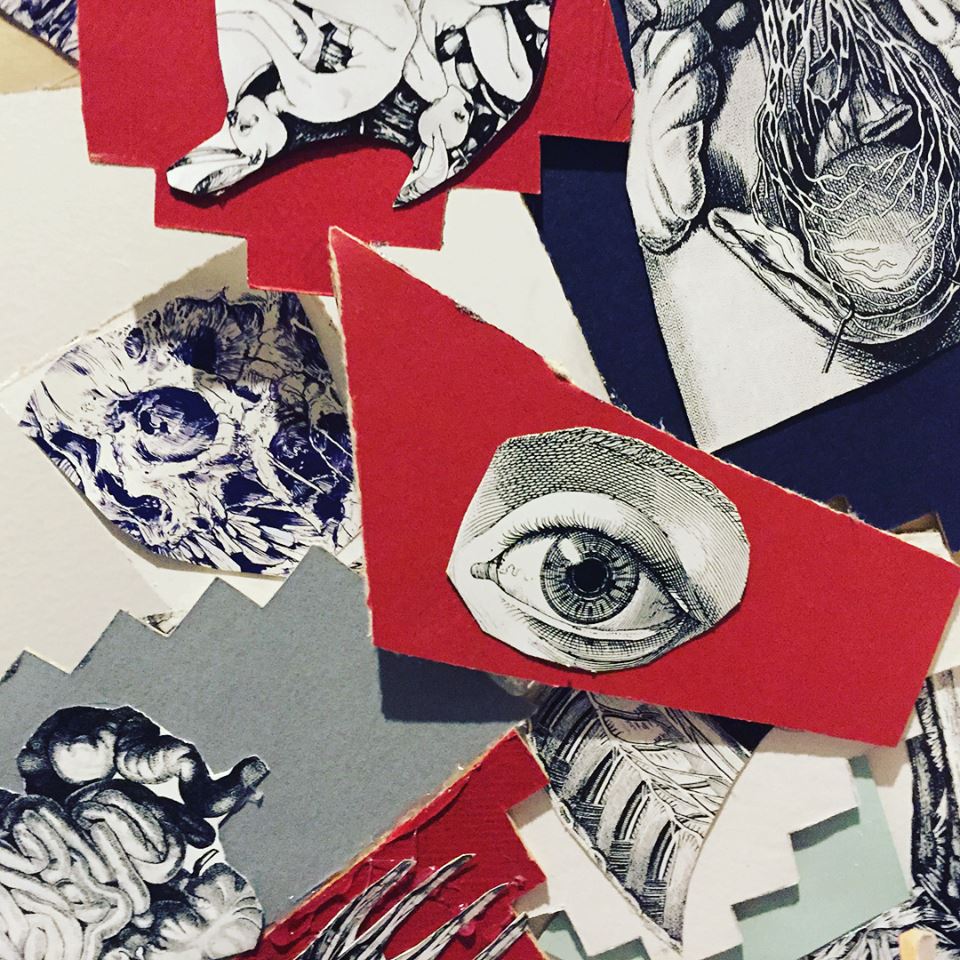 An inside “look” at the “Clouds” exhibition, which opens next month at the AMA. The exhibit will approach the topic of the Armenian Genocide using allegory and a combination of artistic mediums.
An inside “look” at the “Clouds” exhibition, which opens next month at the AMA. The exhibit will approach the topic of the Armenian Genocide using allegory and a combination of artistic mediums.
L.T.: In addition to creating art and curating exhibits, one of your roles as the Artist-in-Residence is teaching art classes. Right now, the program is only available for children but soon, you will offer a similar one for adults. In a diaspora that often struggles to maintain interest and enrollment in our language and religious schools, why do you think that your art classes are so popular in the community, and what do you envision as the long-term goal?
A.T.: I don't want to be very sentimental right now, but I strongly believe that art makes us better, in certain ways. It opens up our creative abilities. Sure, some people are born with creative talent, but I also believe that these abilities can be trained, just as everything else. We need to do this, and it should be done at a young age.
Currently, our school serves 6-10-year-olds and 11-15-year-olds, and we plan on expanding it to serve older children and adults. There is a crucial period when children start forming their personalities, and being exposed to art and culture—and knowing their art and culture—enriches their personalities from a very young age, and will help them to perceive the world in a more enlightened way. Having an art school does not mean that everyone who attends will become an artist or creative person or do something related to art in the future—I hope they will, but the true intention is to develop inside of them some qualities that are going to be felt when they become adults.
Most of the kids who come here are from the Armenian Diaspora; some of them speak Armenian, some of them don't, but thanks to the program we made, they are getting to know their culture and their heritage in a fun, creative way, which helps them to appreciate it more, and I think that is very important.
I said that art helps us become better people. I also think that kids help me become a better person [she laughs]. I have hope. I feel some good changes inside of me because children are very authentic, pure, organic, natural. I learn from them every class—I pretend to teach but really, I learn from them.
.jpg) A few of the art students showing off their masterpieces with their proud teacher, Arevik, in the middle.
A few of the art students showing off their masterpieces with their proud teacher, Arevik, in the middle.
L.T.: Hopefully, you will have a similar experience with the adults. How do you plan on bringing out a youthful imagination from a crowd that may have lost that skill along life’s journey?
A.T.: A big part of my residency was to create this art school for Armenian kids, but pretty soon, the adults got jealous, so we are fulfilling their request to do something for them, too!
I will learn from the adults, too. That's what we do every day, actually, just by socializing and meeting people, and I'm sure that apart from having a good time, which I'm sure we're going to have, we will all learn from each other and share this beautiful experience.
I think that this will be a good experience for the adults because our lives are so stressful and sometimes boring. Many people go to work, they do their duties, then go home and repeat the same routine every day. Just opening them up to art and getting them to do something creative will leave a positive effect on them. Most of the program is going to be centered on painting and drawing. Why did I pick those mediums? Because even if you don't have any experience with painting, or if you think that you cannot draw a single line, they both have a meditative effect, which gives off a certain pleasure.
I am also incorporating collage and mixed media, which will give them more freedom to express themselves. When I say “collage,” I mean something like this [she points to some of the pieces in her “Clouds” exhibit]. I am going to teach this not-very complicated technique of collage on plastic paper and cutouts, paint, ink. The process of it is fascinating. I don't know how the ready-made product will feel, but the process of it is wonderful for both kids and adults.
I am very proud of this school and I hope for it to grow. I hope more and more kids and adults—not only Armenians—will join the school.
L.T.: Your role is very all-encompassing here. Whoever takes the reins after you has some big shoes to fill!
A.T.: No one will [she states, in full deadpan]. I'm going to stay forever, like a politician with a lifelong appointment! [We both chuckle a little too long at this.]
In all seriousness, I am honored to be the Artist-in-Residence here. AMA sponsored my artist visa to bring me here from Armenia, specifically to be this bridge of culture between the Armenian Diaspora and American society, and, of course, to fulfill my artistic experience. This is such a pure move on their behalf; it is the first time the museum has offered this kind of program to an Armenian artist and I truly hope this tradition will continue, so that other young artists can develop and express themselves in the Armenian community in the United States.
And I sincerely hope that other organizations will follow suit and help other talented people from our community—from artists to scientists to writers and beyond—to express ourselves and fulfill our goals. We have no shortage of talent in our community and everyone deserves the opportunity to share their unique skills with the world.
“Clouds” will open at the AMA on Tuesday, Oct. 23, 2018, and will run through Sunday, April 7, 2019. For more information on the exhibit, the artist, and the AMA, please visit https://www.armenianmuseum.org/.
Arevik also created a line of scarves, based on some of the images from “Clouds.” They are available for purchase by reaching out to Arevik via Facebook.
Join our community and receive regular updates!
Join now!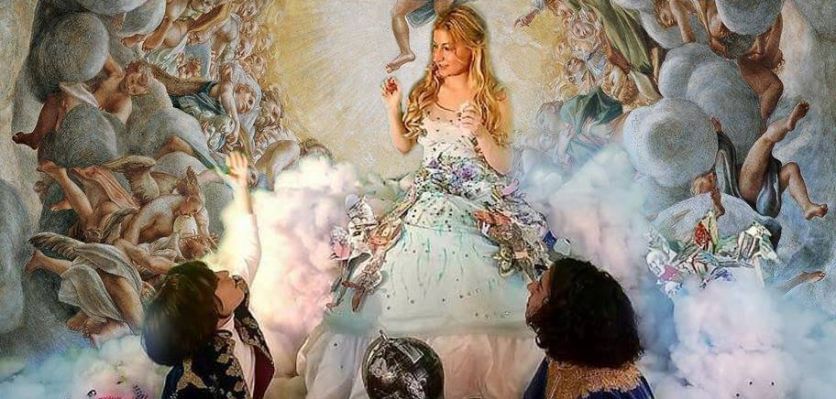
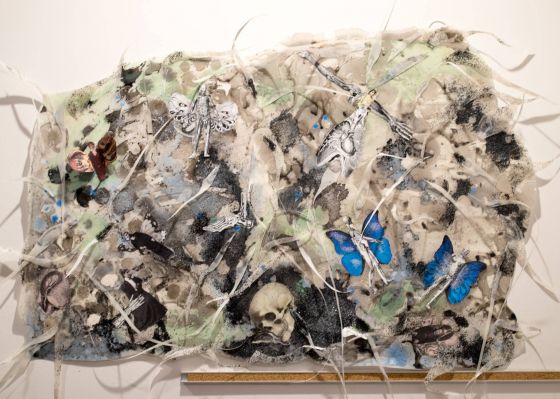
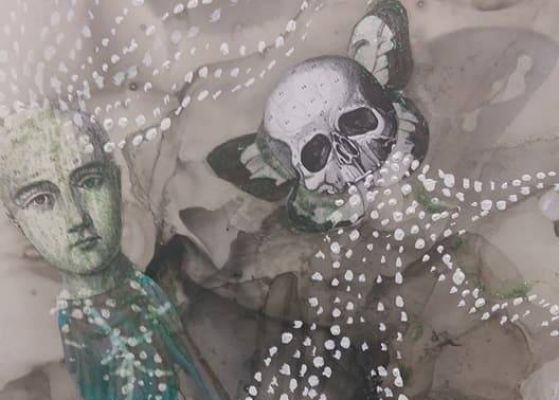
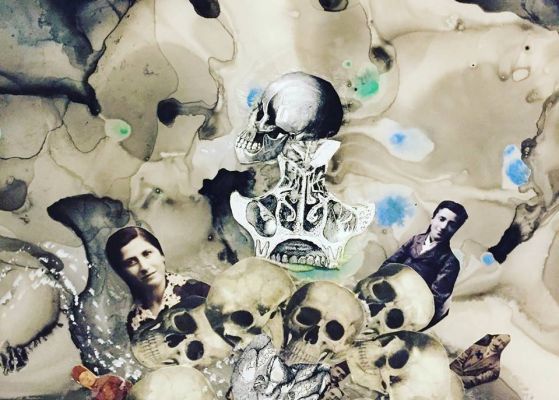
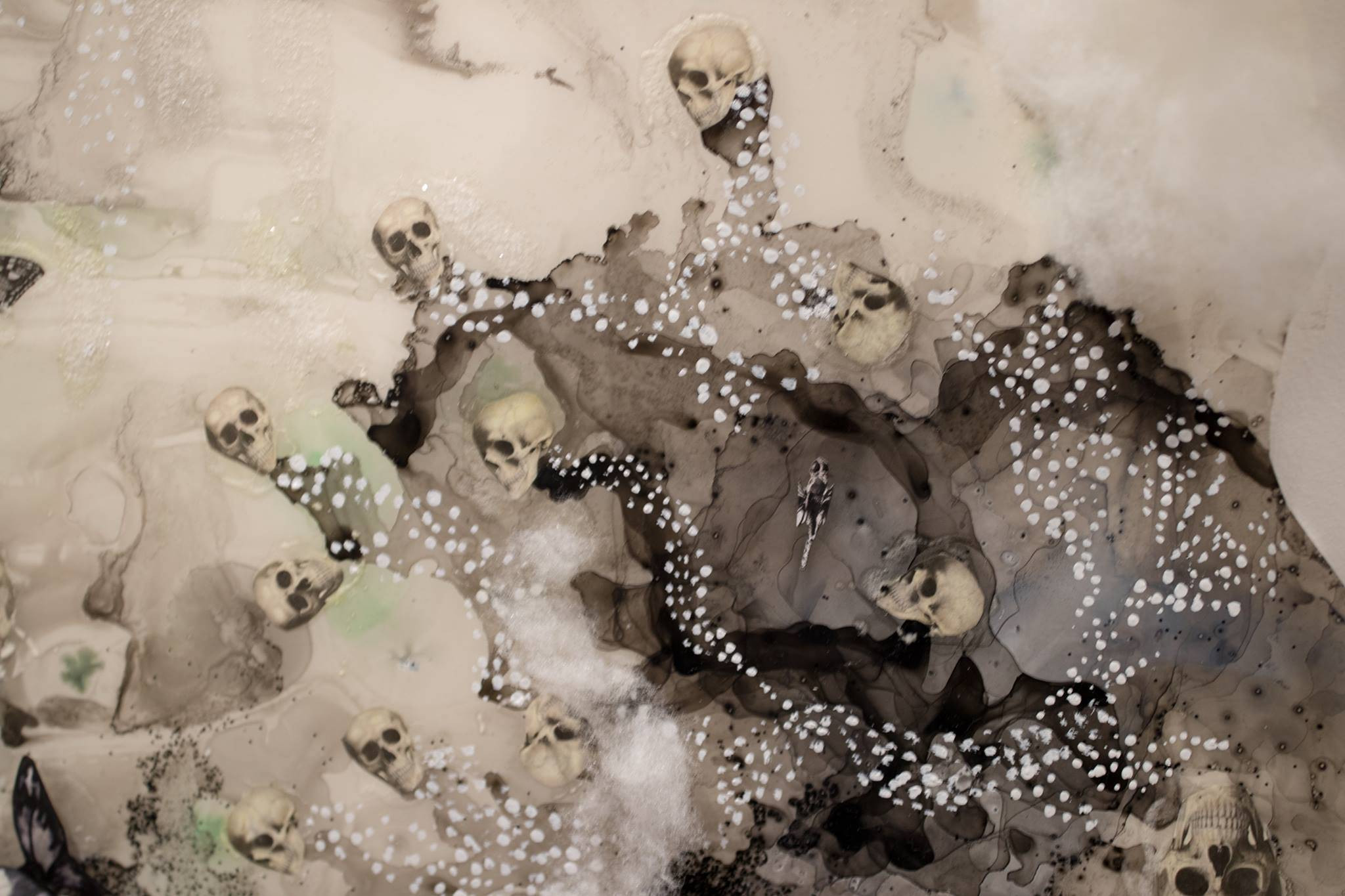
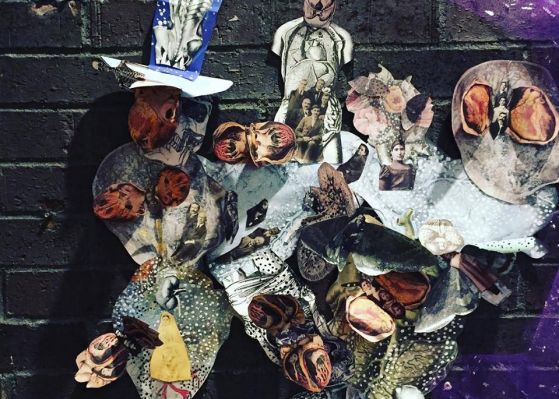
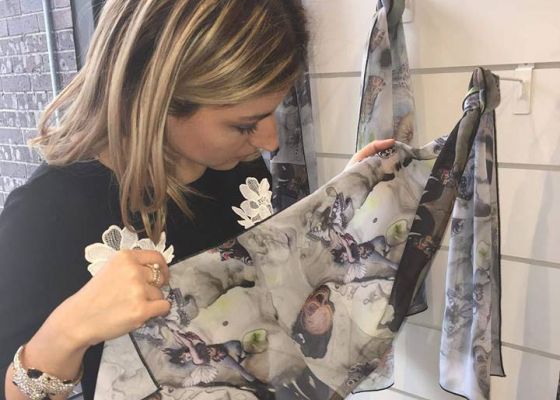
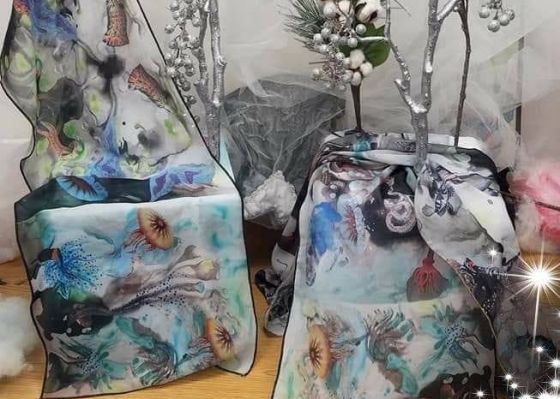
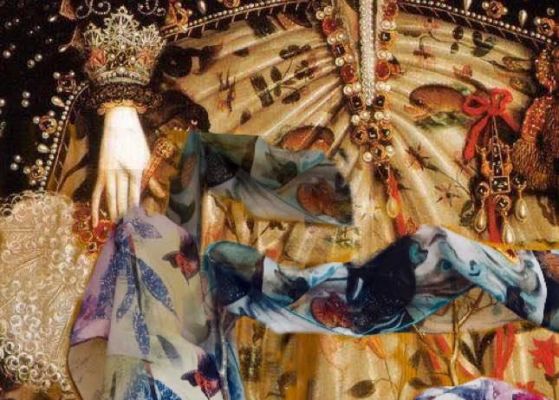
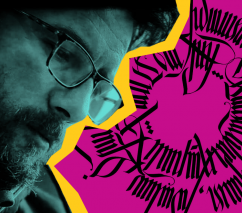
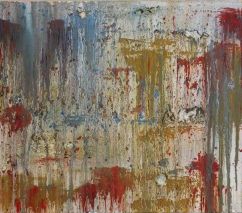


Attention!